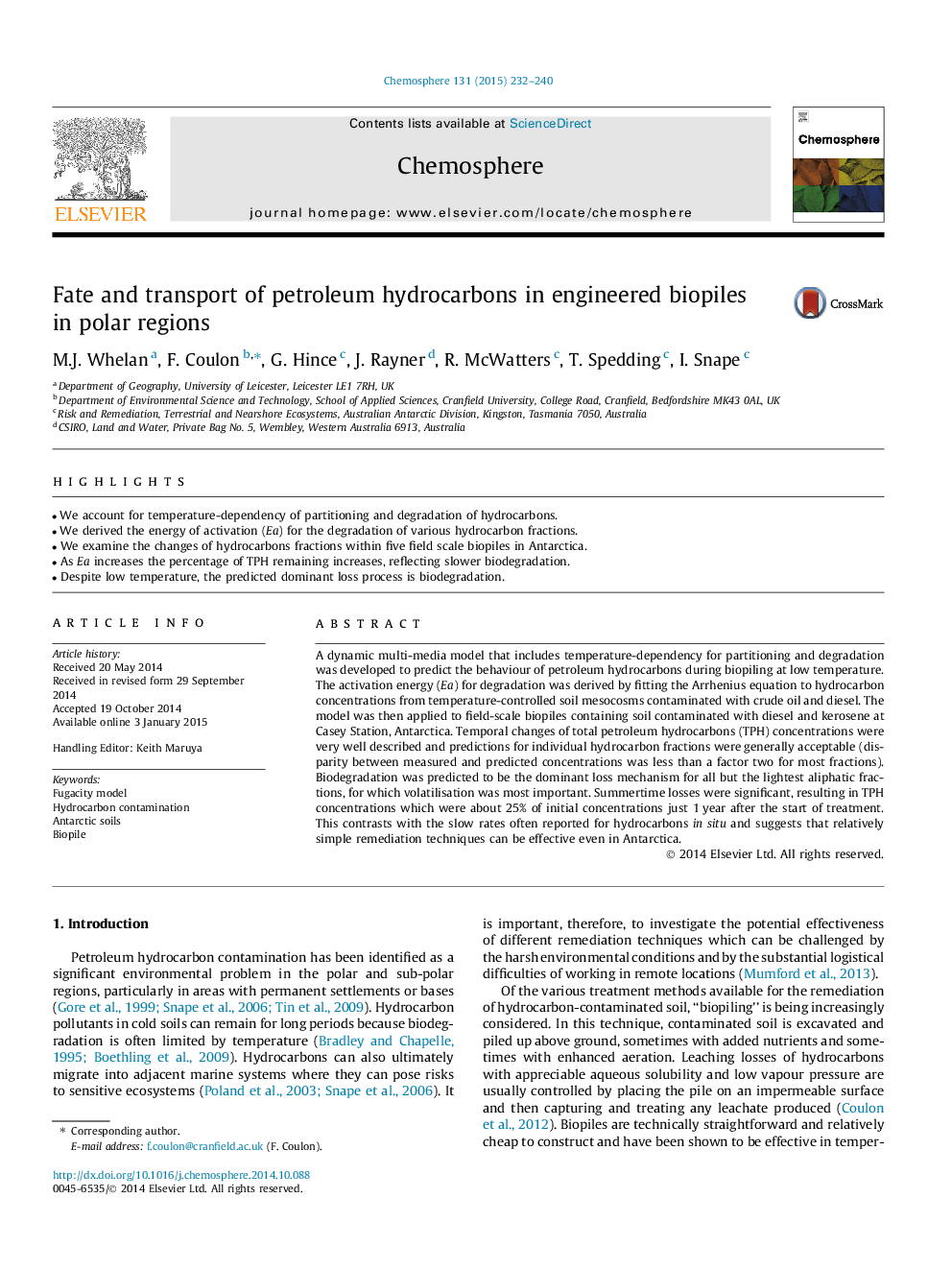| Article ID | Journal | Published Year | Pages | File Type |
|---|---|---|---|---|
| 6308049 | Chemosphere | 2015 | 9 Pages |
Abstract
A dynamic multi-media model that includes temperature-dependency for partitioning and degradation was developed to predict the behaviour of petroleum hydrocarbons during biopiling at low temperature. The activation energy (Ea) for degradation was derived by fitting the Arrhenius equation to hydrocarbon concentrations from temperature-controlled soil mesocosms contaminated with crude oil and diesel. The model was then applied to field-scale biopiles containing soil contaminated with diesel and kerosene at Casey Station, Antarctica. Temporal changes of total petroleum hydrocarbons (TPH) concentrations were very well described and predictions for individual hydrocarbon fractions were generally acceptable (disparity between measured and predicted concentrations was less than a factor two for most fractions). Biodegradation was predicted to be the dominant loss mechanism for all but the lightest aliphatic fractions, for which volatilisation was most important. Summertime losses were significant, resulting in TPH concentrations which were about 25% of initial concentrations just 1Â year after the start of treatment. This contrasts with the slow rates often reported for hydrocarbons in situ and suggests that relatively simple remediation techniques can be effective even in Antarctica.
Related Topics
Life Sciences
Environmental Science
Environmental Chemistry
Authors
M.J. Whelan, F. Coulon, G. Hince, J. Rayner, R. McWatters, T. Spedding, I. Snape,
